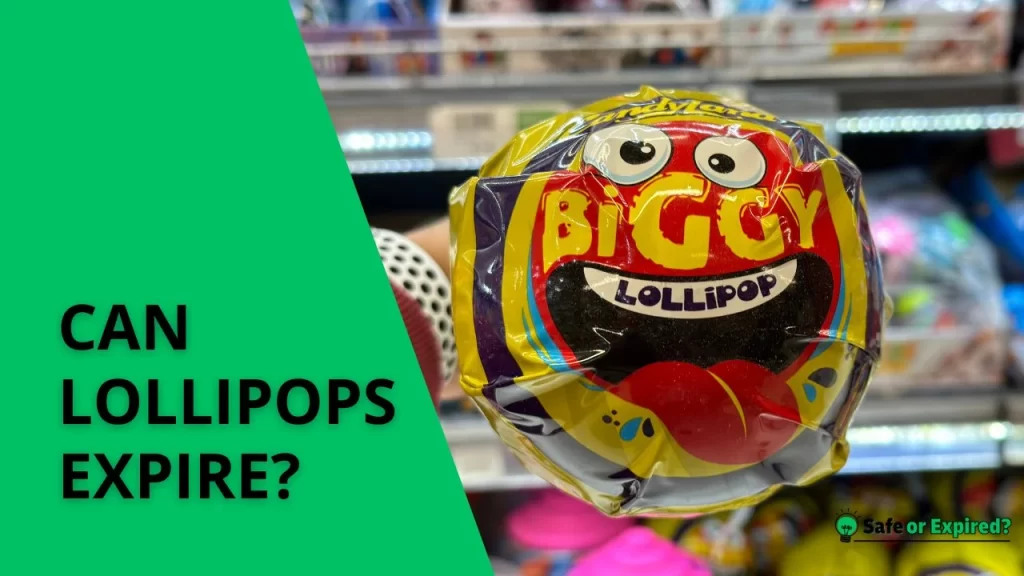“Can lollipops expire?” is one of the most asked queries about the lollies, and the answer is yes. However, there’s a lot more to uncover. If you’ve found an old lollipop, stick to the end, as this guide is about spotting an expired lollipop, understanding what affects its shelf life, and sharing tips to keep it fresh longer.
Continue reading.
Can Lollipops Expire? [All the Details]
Yes, lollipops can expire. When they do, they decline in quality rather than becoming unsafe to eat. Over time, they may show signs of discoloration, crystallization, or flavor loss. However, note that the lollipops generally have a longer shelf life due to high sugar content.
You might be thinking, “How long can lollipops last before they expire?” Lollipops can last long, often up to 12 months or more, if kept in cool, dry places. Note that they can start to lose flavor or get sticky if not stored right (opened and unrefrigerated).
Can Lollipops Expire if Unopened?
Yes, lollipops can expire even if unopened. They’re best enjoyed within their best-before date for the yummiest taste. However, they stay good for long, often years, if you keep them in the right spot — cool and dry. To know when they expire, check the label.
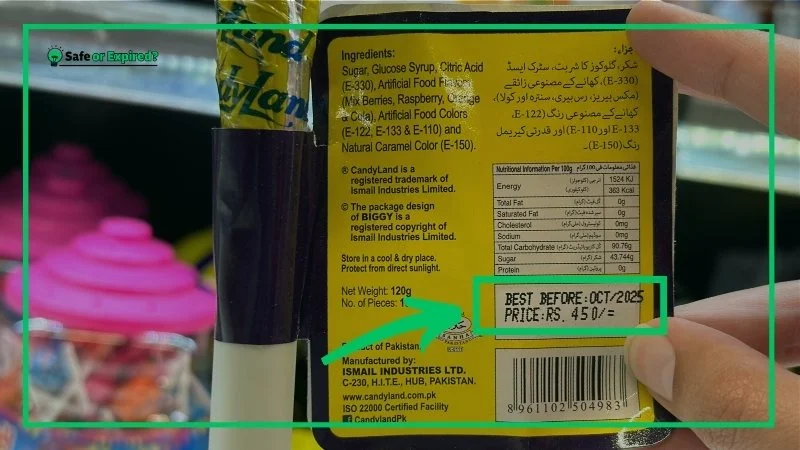
An unopened lollipop is shielded from external contaminants, moisture, and air, all of which can accelerate aging. This sealed environment helps maintain the candy’s integrity, preserving its flavor, color, and texture for an extended period.
Do Lollipops Expire in the Fridge?
Lollipops expire in the fridge but can last longer as the cool temperature slows down any changes. Just make sure they’re wrapped well so they don’t get sticky or take in smells from other foods. This way, your lollipops stay fresh and yummy.
Here’s a complete table about the lollipop’s expiry:
| Counter | Fridge | |
| Opened | It can last a few months; refrigeration slows down the deterioration process, but watch for condensation. | Can last a few months; refrigeration slows down the deterioration process but watch for condensation. |
| Un-Opened | It can last a few months; refrigeration slows down the deterioration process, but watch for condensation. | Extended shelf life beyond a year; the cool, stable environment helps maintain quality for longer. |
For chocolate lovers, Ferrero Rocher is often a top pick with its unique combination of chocolate and hazelnut. Yet, even these luxurious chocolates come with questions about their longevity. How do they hold up compared to other popular chocolates? For an in-depth comparison and insights into the shelf life of Ferrero Rocher, don’t miss our article, “Does Ferrero Rocher Expire? Comparison with Other Chocolates.”
Which Factors Affect Lollipop’s Expiry? (Top 6)
The expiry of lollipops is affected by storage conditions, ingredients, packaging, temperature changes, and light exposure. Keeping them in a dry place helps them last longer. Natural ingredients might not last as long as artificial ones, but good packaging protects them from air and moisture.
Here are the details on what affects a lollipop’s expiry:
Ingredients
At the heart of a lollipop’s lifespan are its ingredients. Sugar, the star player, acts like a natural preservative, helping these treats last longer. But, if additions like dairy, fruits, or nuts exist, the lollipop might not stick around as long because these ingredients can go bad quickly.
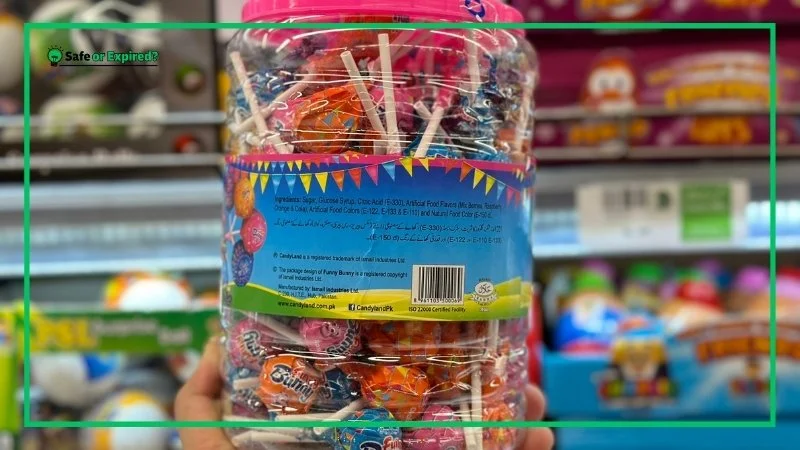
Moisture
Moisture is like a party for bacteria and mold – they love it. Luckily, lollipops are the quiet kids, low in moisture, making it hard for unwanted guests to thrive. This is why they often have a longer shelf life than other sweets.
Packaging
How a lollipop is wrapped matters a lot. Tight, moisture-fighting packaging is a hero, shielding our sweet friends from air and humidity. This care keeps them fresh and yummy for longer.
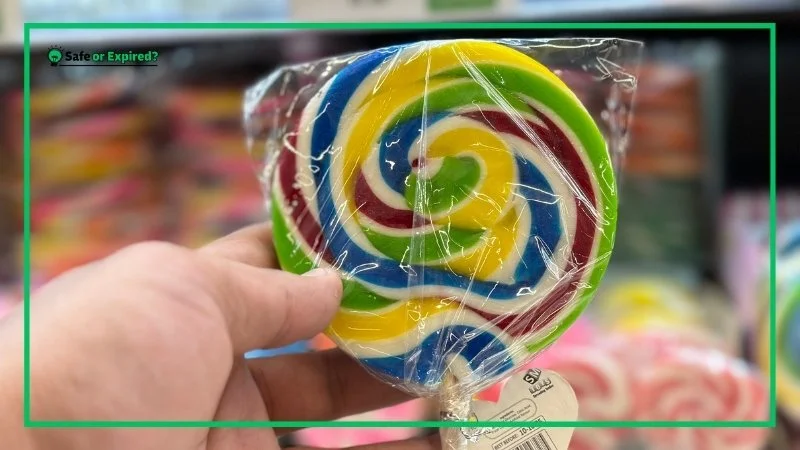
Storage Conditions
Where you store your lollipops can make a big difference. A cool, dry place is their happy zone, keeping them from getting sticky or melting away. It’s also a great way to prevent mold.
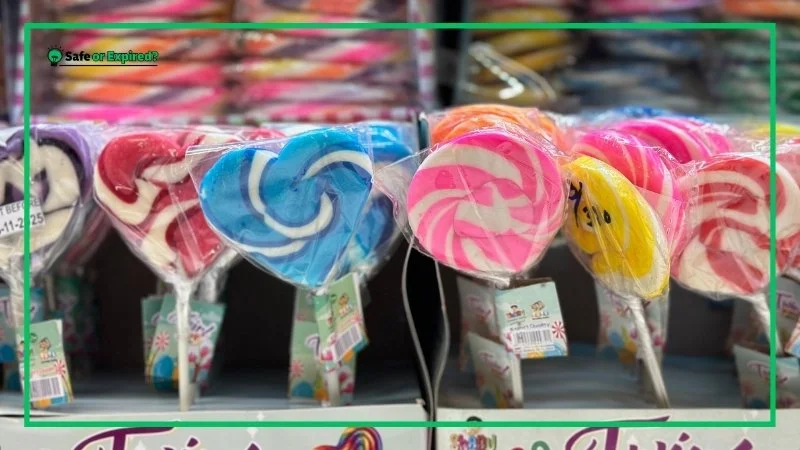
Additives and Preservatives
Some lollipops come with a boost – additives and preservatives. These are like secret agents, working to keep the sweets safe from bacteria and oxidation, thus extending their stay in your candy jar.
Production Process
Lastly, how and where lollipops are made also counts. A clean, careful production process means there’s less chance for early spoilage. Note that a lollipop that is manufactured correctly has a longer shelf life (best by date).
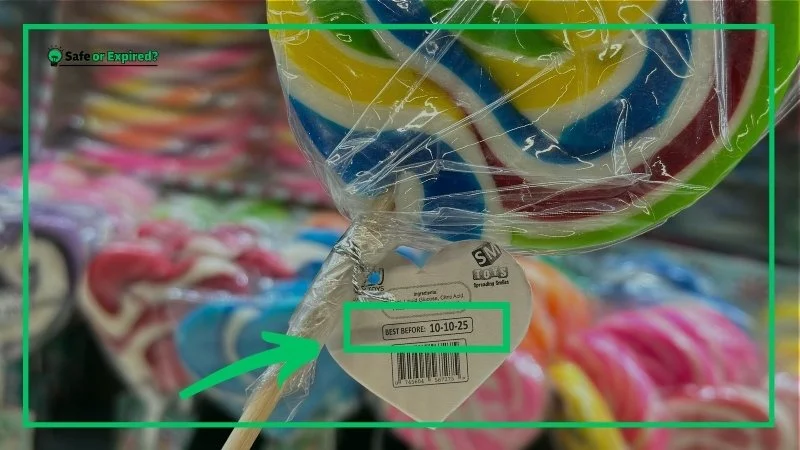
What Does an Expired Lollipop Look Like? How Can you tell?
An expired lollipop might show signs like color fading, sugar crystals on the surface, or stickiness. Its vibrant hues can dull over time and might not be as smooth as before. The wrapper could also stick to the candy, making it hard to open.
Discoloration
One of the first visual clues that a lollipop has expired is a change in its color. Over time, the vibrant hues of a lollipop can fade or become uneven. This discoloration is often due to exposure to light or fluctuations in temperature, which can break down the colorants used in the candy.
Crystallization
Sugar crystallization is another common phenomenon in aged lollipops. If you notice a gritty texture on the surface of the lollipop or see visible sugar crystals forming, it’s a sign that the candy is old. This happens when moisture gets into the candy, causing the sugar to re-crystallize. Instead of a smooth, glass-like texture, the lollipop becomes rough and less pleasant.
Stickiness and Softening
Although lollipops are meant to be hard, an expired one might feel sticky to the touch or show signs of softening, especially in high-humidity environments. This stickiness occurs when the lollipop absorbs moisture from the air, leading to a breakdown of its solid structure.
Wrapping Changes
The wrapping of a lollipop can also provide clues to its age. Wrappers that appear discolored, faded, or have become sticky themselves indicate that the lollipop has been exposed to less-than-ideal conditions for a prolonged period. In some cases, the wrapper might even begin to adhere to the candy, making it difficult to unwrap without leaving pieces of paper or plastic behind.

Off Odor
While lollipops don’t spoil like dairy or meat products, an expired lollipop can develop an off odor. This is less common but can occur due to the degradation of flavoring agents or the absorption of smells from the environment if the candy has been stored improperly.
Flavor Fading
Lastly, even if a lollipop shows no visible signs of expiration, its flavor can diminish over time. The vibrant taste that once burst upon the first lick might now be muted or have an artificial aftertaste, suggesting that the candy’s best days are behind it.
People also ask, “Can lollipops get moldy?” While it’s rare, lollipops can become moldy, particularly under certain conditions. Mold growth on candies like lollipops is usually a sign of exposure to moisture or being stored in a damp environment.
And when it comes to classic candies, M&Ms are a staple in many households. These colorful chocolate pieces bring joy to any occasion, but just like lollipops, you might wonder if they ever go bad. To learn more about how to keep your M&Ms tasting fresh and when it’s time to say goodbye, check out “Do M&Ms Expire? Keeping Your Favorite Treats Fresh & Tasty”.
What Happens if You Eat an Expired Lollipop? (Everything to Know)
Eating an expired lollipop is usually safe, but it might not taste as good. The flavors can fade, or it might feel sticky or gritty. In some cases, eating expired lollipops can cause digestive discomfort, dental issues, and allergic reactions.
Taste and Enjoyment
First and foremost, the pleasure of eating a lollipop might be significantly reduced. An expired lollipop may have changed color, texture, and flavor. Instead of a satisfying, crisp snap and a burst of flavor, you might be met with a less appealing, possibly sticky or gritty texture and a muted or off flavor.
While not harmful, this diminished sensory experience can turn a moment of sweet indulgence into a disappointing one.
Digestive Discomfort
Although rare, there’s a small chance of experiencing mild digestive discomfort after eating an expired lollipop, especially if it shows signs of degradation or contamination. If the candy has absorbed moisture and become a breeding ground for microorganisms or is stored in conditions that promote fungal growth, consuming it could lead to symptoms like stomach ache or nausea.
This scenario is unlikely but possible, particularly if the candy’s packaging was compromised.
Allergic Reactions
For individuals with certain food allergies, there’s a risk that the degradation of ingredients in an expired lollipop could trigger allergic reactions. This is particularly relevant if the candy contains nuts, dairy, or other common allergens that might not be as stable over time.
Dental Concerns
Eating sticky, expired candy can also pose risks to dental health. If the lollipop has become overly sticky due to moisture absorption, it can adhere more strongly to the teeth, potentially leading to dental caries (cavities) or harming dental work like fillings or braces.
The risk increases if the candy is consumed frequently and without proper dental hygiene afterward.
So, is it safe to eat expired lollipops?
In most cases, it’s generally safe to eat expired lollipops. They don’t spoil like fresh foods do because they’re mainly sugar. However, their taste and texture might change over time. If you notice any mold or the lollipop looks or smells strange, it’s better to toss it. Mostly, expired lollipops won’t harm you, but they might not be as pleasant to eat.
So, before you buy lollipops, take a look at its label. If there’s time left, then you can purchase them without worries.
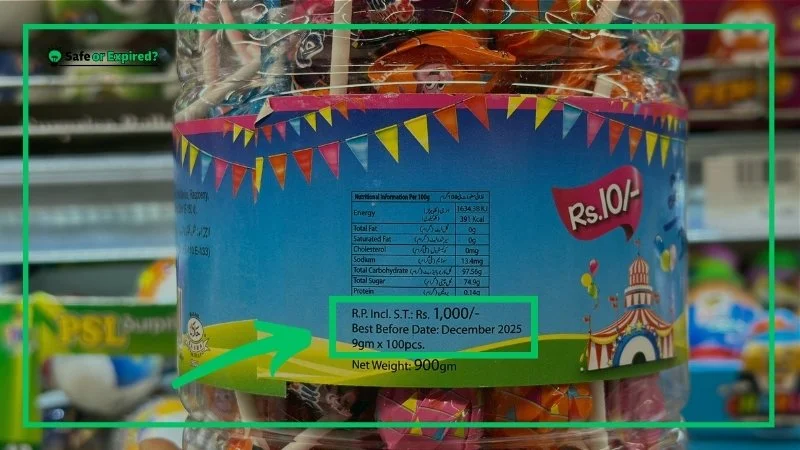
FAQ
Do See’s Lollipops Expire?
Yes, See’s Lollipops do have a best-before date, which is a good guide for enjoying them when they’re freshest. However, they can last beyond this date if stored properly in cool, dry conditions. Their quality might decline over time, so it’s best to enjoy them close to the date indicated for optimal taste.
Do Charms Lollipops Expire?
Charms Lollipops, like other candies, come with an expiration date. While they don’t expire like perishable foods, their flavor, texture, and appearance might change over time. Keeping them in a cool, dry place extends their shelf life, making them last longer while maintaining quality.
Do Double Lollipops Expire?
Double Lollipops have a best-before date to ensure you enjoy them at their best. They’re safe to eat after this date, but their taste and texture might not be as good. Proper storage away from heat and moisture will help keep them fresh longer.
Do Takis Lollipops Expire?
Takis Lollipops have a best-before date (just like other lollies). They can last past this date, especially if unopened and stored in the right conditions. However, for the best flavor experience, it’s recommended to consume them by the date on the package. Avoid storing them in damp or hot areas to prevent quality loss.
Conclusion
All in all, it’s clear now that lollipops can expire, but they come with a long shelf life. Here’s a sweet summary of what we’ve uncovered about lollipop expiration:
- Lollipops can last beyond their best-before date, especially when stored in cool, dry conditions, preserving their taste and texture.
- Quality changes, not safety concerns, are the main issue with expired lollipops, with potential changes in color, flavor, and texture over time.
- Inspect before indulging: Check for signs of spoilage, such as unusual odors, mold, or drastic changes in appearance, to ensure the best experience.
Remember, while lollipops may not spoil traditionally, paying attention to their storage and condition ensures you enjoy them at their best. Happy snacking!

